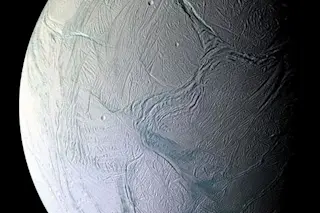The sun has been acting up as of late, with intense magnetic forces creating large clusters of sunspots and associated solar flares. The video above, based on data from NASA's Solar Dynamics Observatory spacecraft, shows a closeup of some of the action. Look for the tangled lines between the two bright, active regions. Here, magnetic field lines are being made visible (in extreme ultraviolet light) by high-energy particles spinning along them. When magnetic fields on the sun get too tangled up, they may suddenly snap, releasing a gargantuan explosion of energy in the form of a solar flare. In the video, you can watch this process play out as the sun's surface crackles with magnetic energy and then bright flares pop off. http://www.youtube.com/watch?v=3r-sirr0VGU&feature=youtu.be White light images are good for showing sunspots, which form in these areas of intense magnetic activity. In the video above, you can watch a particularly large cluster of sunspots swing across the view with the sun's rotation. As the little image of our planet used at lower left for scale indicates, just one of the big sunspots could easily swallow up the Earth with room to spare.

Observed and predicted progress of the solar cycle. The solid line continuing in the lower hump to the right shows the prediction out to the year 2020. (Source: Marshall Spaceflight Center/NASA) In the image above, the jagged line shows observed sunspot numbers, which is a good indication of solar activity. The solid line shows the prediction. As the image indicates, the sun's overall activity is probably going to subside pretty soon. (Also, the peak for this cycle is quite a bit lower than the previous one.) So please check back for more images of the sun before the activity really drops off. Also come back for some aurora photos I've been saving from my recent trip to Norway. (One even looks like a Viking ship.)













